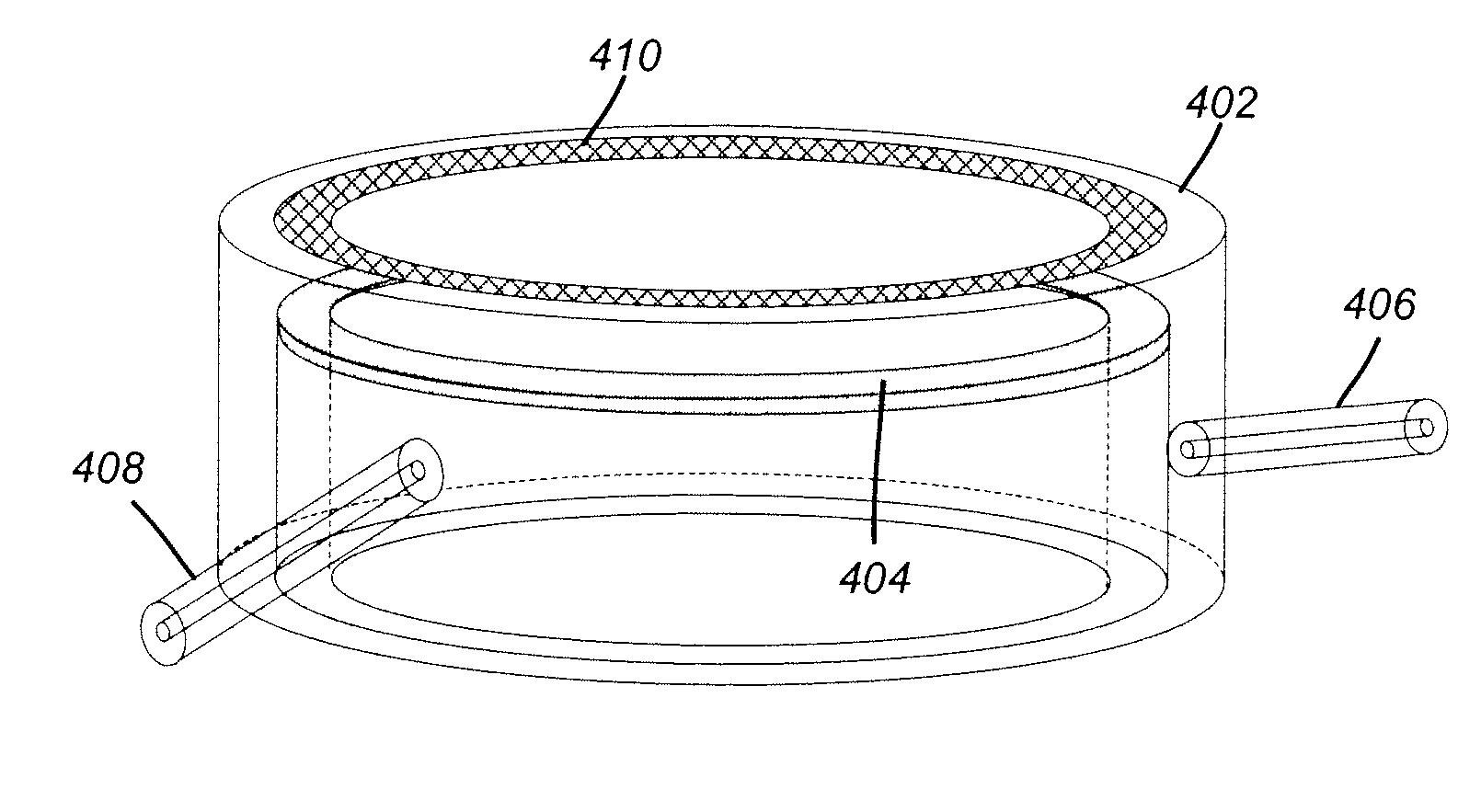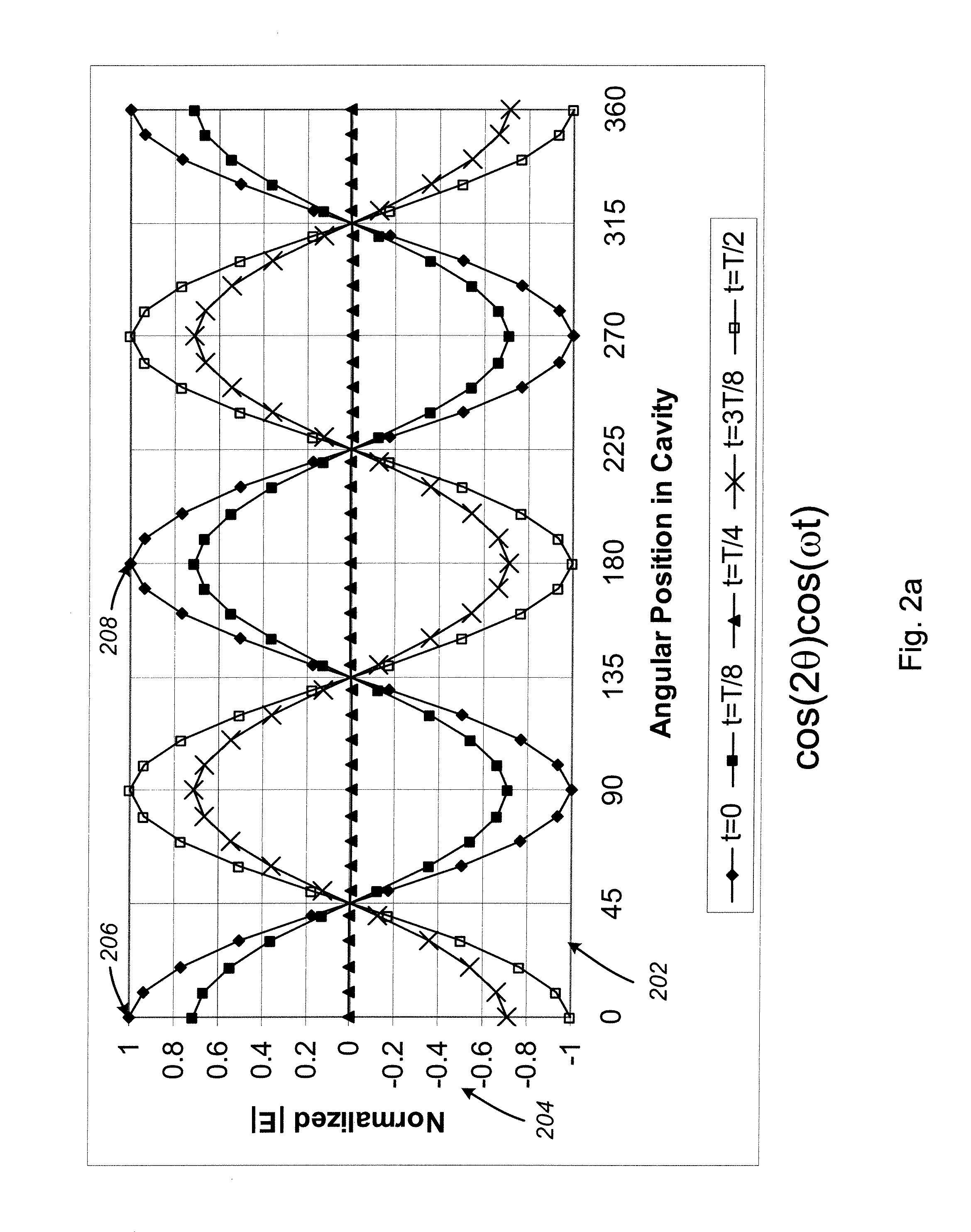Active electronically steered cathode emission
a technology of electronic steered cathode and emission site, which is applied in the direction of travelling-wave tubes, tubes with multiple resonators, electric discharge tubes, etc., can solve the problems of affecting the quality of electron beams, affecting the operation of the emission site, and requiring an exceedingly tight power supply regulation. achieve the effect of greater control over the emission si
- Summary
- Abstract
- Description
- Claims
- Application Information
AI Technical Summary
Benefits of technology
Problems solved by technology
Method used
Image
Examples
Embodiment Construction
[0024]In its simplest form, an active electronically steered cathode (AESC) is similar to the input cavity of a conventional inductive output tube (IOT). FIG. 1 depicts an input cavity of an IOT, typical of the prior art. A resonant cavity 102 includes a cathode 106 atop a cathode support structure 108. A control grid 103 is positioned above the cathode 106, and a radio-frequency (RF) signal is coupled into the cavity via an RF transmission line 110 coupled to an inductive loop 112. An anode (not shown in FIG. 1) is located outside of the resonant input cavity and is biased with respect to the cathode to draw an electron beam from the cathode. The control grid 103 is positioned close to the cathode to define a G-K gap between the cathode and the control grid, and the grid is typically held at a DC potential of several hundred volts with respect to the cathode 106. This steady bias, in combination with the RF signal coupled into the G-K gap, can be used to pulse the emission of the e...
PUM
 Login to View More
Login to View More Abstract
Description
Claims
Application Information
 Login to View More
Login to View More - R&D
- Intellectual Property
- Life Sciences
- Materials
- Tech Scout
- Unparalleled Data Quality
- Higher Quality Content
- 60% Fewer Hallucinations
Browse by: Latest US Patents, China's latest patents, Technical Efficacy Thesaurus, Application Domain, Technology Topic, Popular Technical Reports.
© 2025 PatSnap. All rights reserved.Legal|Privacy policy|Modern Slavery Act Transparency Statement|Sitemap|About US| Contact US: help@patsnap.com



